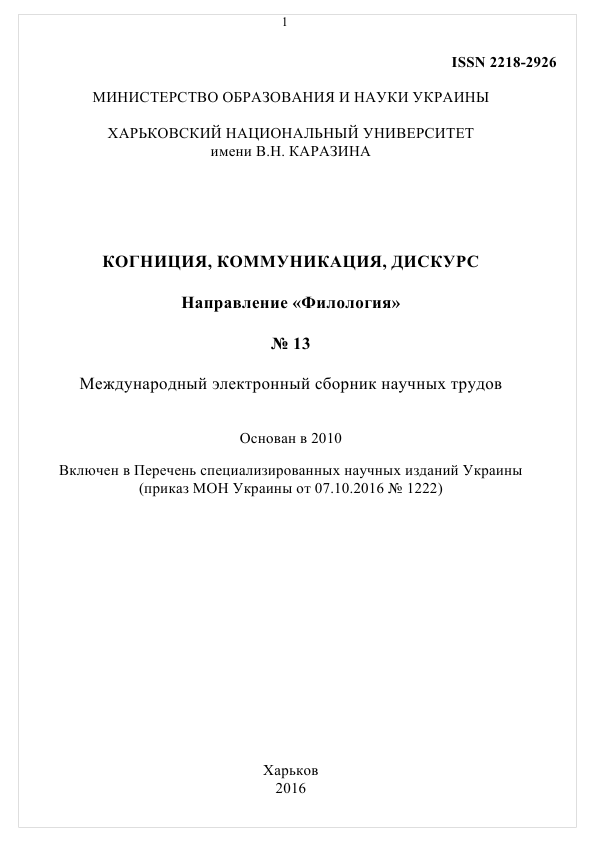Large arrays of information and the conceptological analysis
Abstract
The paper concerns the means for using the keyword and mask search in large arrays of information. The latter include the electronic versions of conventional dictionaries, online dictionaries and media archives. The search in electronic dictionaries makes it possible to set the etymology of direct nomination of the concept, its significate (core), paradigmatic relations and the corresponding word family. The search in online dictionaries is of interest primarily in terms of syntagmatic relations of the concept, in particular the so-called «cooccurrences». The media archives search mainly contributes to identifying the concept referential, i.e. the set of referents
represented by this concept. The purpose of the study is to illustrate possible ways of keyword and mask search in large arrays of information on the example of the German concept GRENZE (BORDER, BORDERLINE, FRONTIER). The study shows that the use of this method considerably simplifies and speeds up the search and processing of language material and its conceptological analysis.
Downloads
References
Donec, P.N. (2006). Koncept «GRENZE» v nemeckom jazyke: onomasiologicheskij ugol zrenija [The сoncept «GRENZE» in German: an оnomasiological point of view]. Visnyk Kharkiv. nats. un-tu im. V.N. Karazina. – V.N. Karazin Kharkiv Uni. Messenger, 726, 3–5.
Donec, P.N. (2009). Elektronnyje slovari i konceptologicheskij analiz [Electronic dictionaries and the conceptological analysis]. Vestn. Mosk. gor. ped. un-ta. – Moscow State Ped. Univ. Messenger, 1(3) , 101–105.
Donec, P.N. (2012). Metod elektronno-leksikograficheskogo poiska i konceptologija [The method of electronic-lexicographic search and conceptology]. Visnyk Kharkiv. nats. un-tu im. V.N. Karazina. – V.N. Karazin Kharkiv Uni. Messenger, 1023, 6–9.
Donec, P. (2014). Die GRENZE: eine konzeptanalytische Skizze der Limologie. Würzburg: Königshausen & Neumann.
Authors, who publish with this journal, accept the following conditions:
The authors reserve the copyright of their work and transfer to the journal the right of the first publication of this work under the terms of the Creative Commons Attribution License (CC BY), which allows other persons to freely distribute a published work with mandatory reference to the authors of the original work and the first publication of the work in this journal.
Authors have the right to enter into separate additional agreements for the non-exclusive dissemination of the work in the form in which it was published by this journal (for example, to post the work in the electronic institutions' repository or to publish as part of a monograph), provided that the link to the first publication of the work in this journal is given.
The journal policy allows and encourages the authors to place the manuscripts on the Internet (for example, in the institutions' repositories or on personal websites), both before the presentation of this manuscript to the editorial board and during review procedure, as it contributes to the creation of productive scientific discussion and positively affects the efficiency and dynamics of citing the published work (see The Effect of Open Access).




